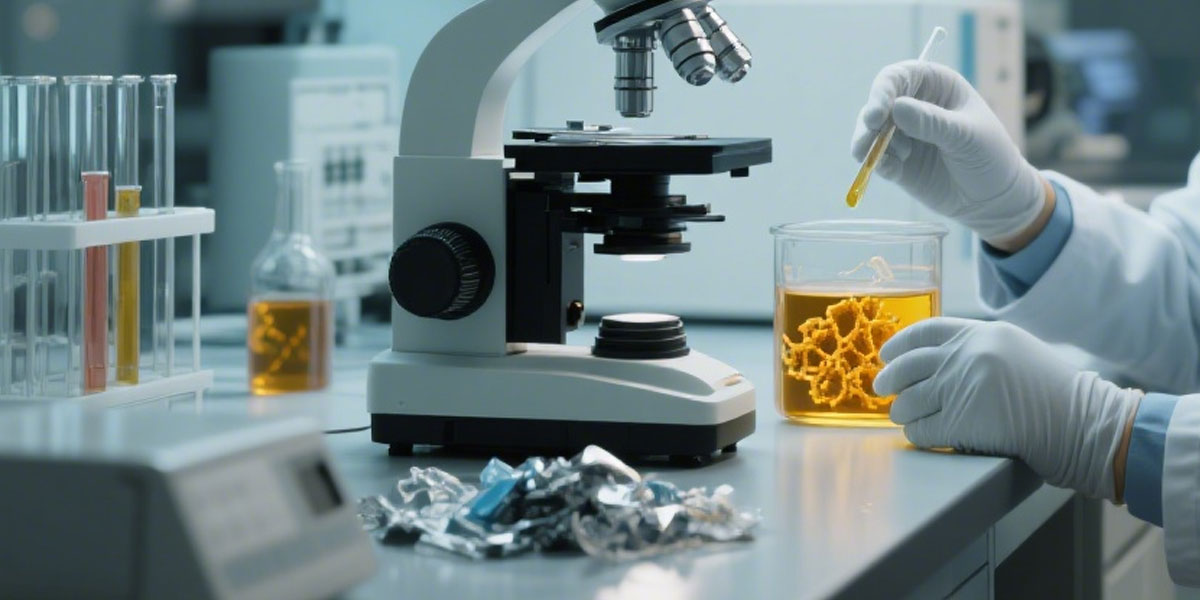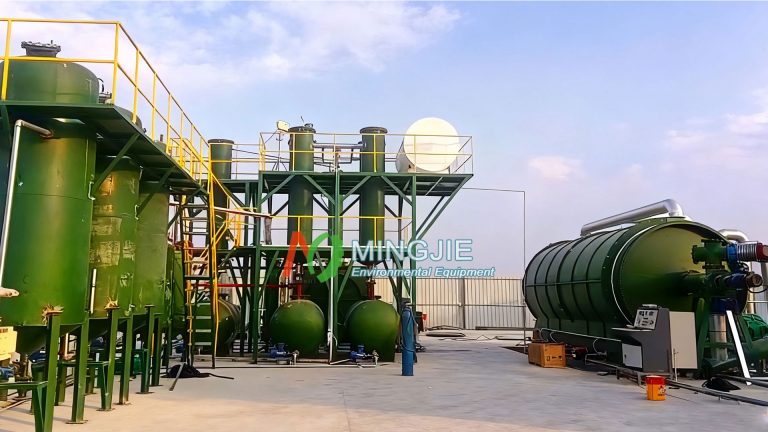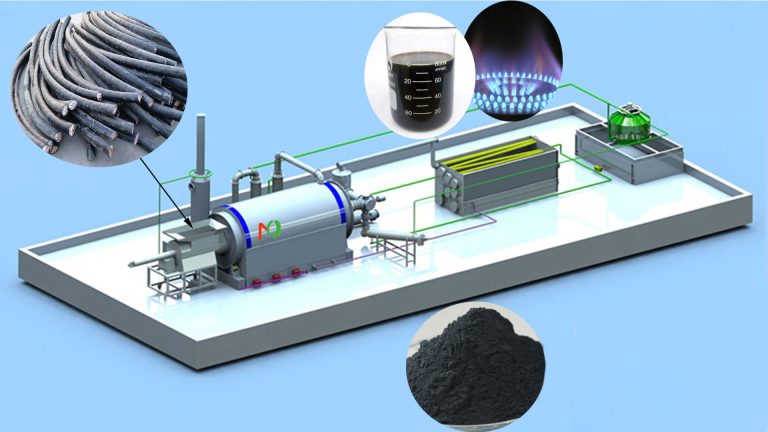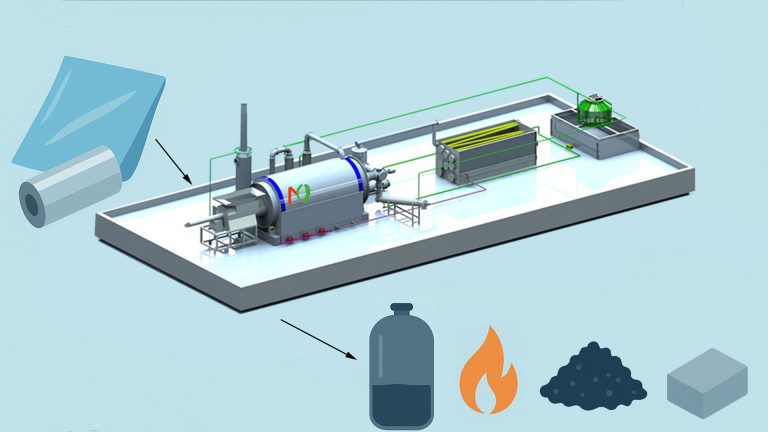The main product of plastic pyrolysis is pyrolysis oil. Its composition is complex, containing a variety of hydrocarbon compounds and a small amount of impurities. Studies have shown that waste plastic pyrolysis oil has similar properties to diesel and can be used to replace diesel.
The composition of waste plastic pyrolysis oil is extremely complex, which is mainly due to the diversity of pyrolysis raw material plastics and the differences in pyrolysis conditions. In general, pyrolysis oil mainly contains various hydrocarbon compounds, such as alkanes, alkenes, cycloalkanes and aromatics.
Taking the pyrolysis oil of different waste plastics as an example. In the pyrolysis oil of waste agricultural film (mainly PE), alkanes and alkenes account for a relatively high proportion, about 78wt.%. The polypropylene (PP) pyrolysis oil of polypropylene (PP) is mainly composed of alkenes and cycloalkanes, accounting for 85wt.%. The aromatic hydrocarbon content in the pyrolysis oil of polystyrene (PS) is prominent, accounting for 92wt.%.
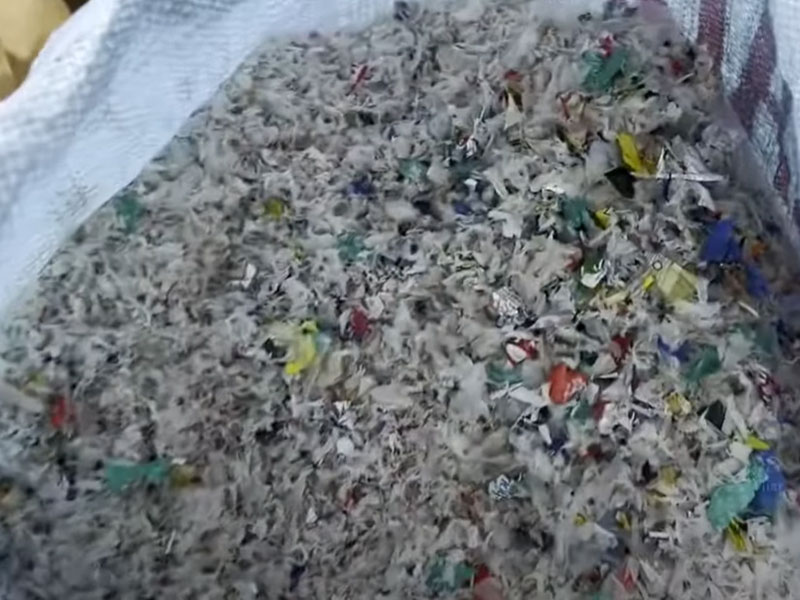
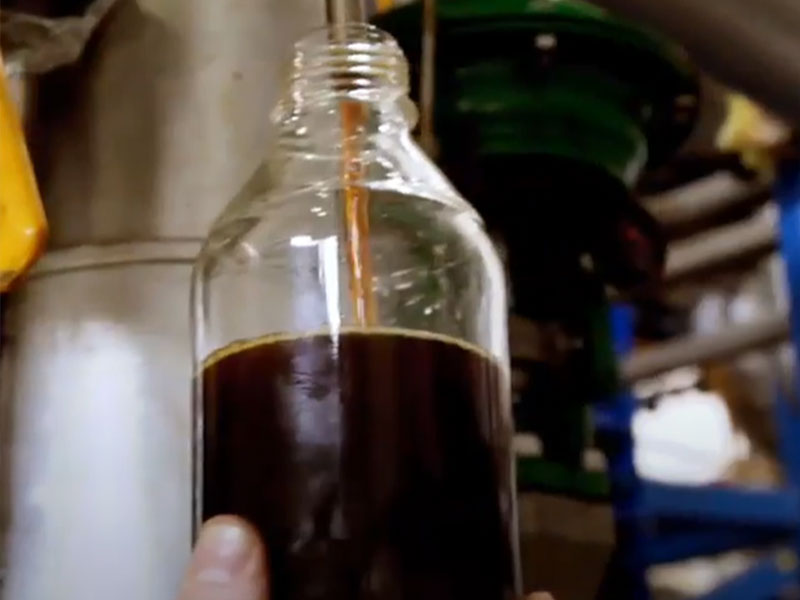
In addition to hydrocarbons, pyrolysis oil often contains some impurities. When PVC plastics are present in the pyrolysis raw materials, chlorine will be introduced into the pyrolysis oil, mostly in the form of organic chlorides. This has a great impact on the subsequent processing and utilization of pyrolysis oil, such as equipment corrosion, catalyst poisoning and other problems.
If the source of waste plastics is mixed, silicone rubber, silicone resin and other silicon-containing substances are mixed in. The silicon content in pyrolysis oil will be high, and the presence of silicon may deactivate the catalyst and interfere with the long-term stable operation of the pyrolysis oil processing device.
In addition, waste plastic pyrolysis oil may also contain a small amount of nitrogen, oxygen and metal impurities. The presence of these impurities will affect the quality and application performance of pyrolysis oil.
How to Improve the Quality of Waste Plastic Pyrolysis Oil?
In order to obtain high-purity and high-quality pyrolysis oil, it needs to be purified. Common methods include distillation, Acid and alkali washing and adsorption.
Pyrolysis oil distillation equipment uses the difference in boiling points of different components to heat the pyrolysis oil to different temperatures. The components are vaporized and condensed in turn to achieve separation. For example, gasoline fractions and diesel fractions can be separated by atmospheric distillation. For components with similar boiling points, vacuum distillation or rectification can be used for further separation.
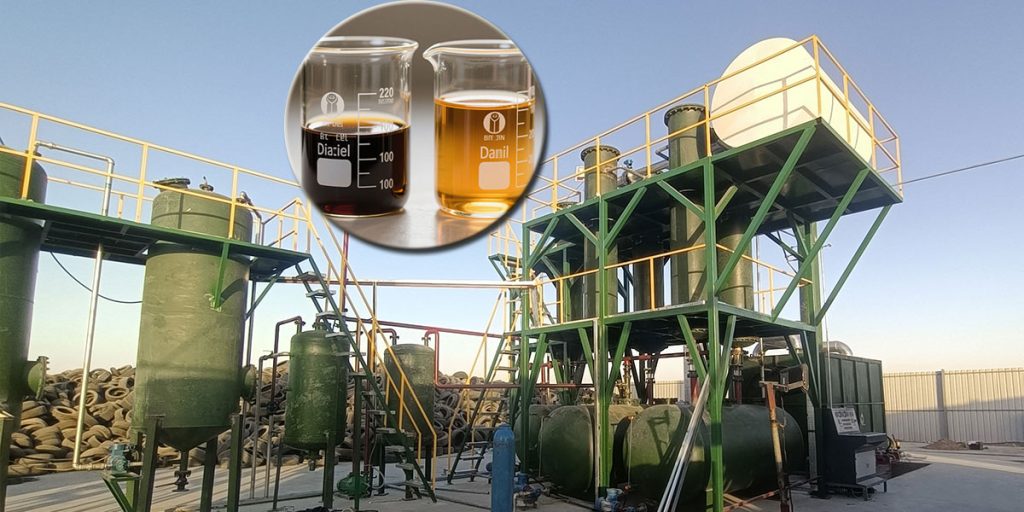
Acid/Alkali Washing mainly uses chemical reactions (acid-base neutralization, dissolution, ion exchange, etc.) to remove impurities. Use acids (such as hydrochloric acid and sulfuric acid) to dissolve metal oxides, carbonates or alkaline impurities. Use alkali (such as sodium hydroxide) to neutralize acidic substances.
Adsorption is to use the adsorption of impurities by the adsorbent (activated clay) to improve the quality of pyrolysis oil. It can remove impurities (moisture and heavy metal ions) in pyrolysis oil.
Application of Plastic Pyrolysis Oil
Use of Fuel Oil
The composition of waste plastic pyrolysis oil makes it have application potential in the fuel field. Gasoline fraction and diesel fraction in pyrolysis oil can account for 60% – 80%.
After proper quality improvement and upgrading (distillation, refining, blending), waste plastic pyrolysis oil can be converted into high-value oil products – gasoline and diesel. They are used in the transportation field to partially replace traditional fossil fuels, reduce dependence on oil resources, and reduce carbon emissions.
In addition, the demand for sustainable aviation fuel (SAF) is growing. After further deep processing, pyrolysis oil is also expected to become a raw material for the production of SAF, contributing to the green development of the aviation industry.
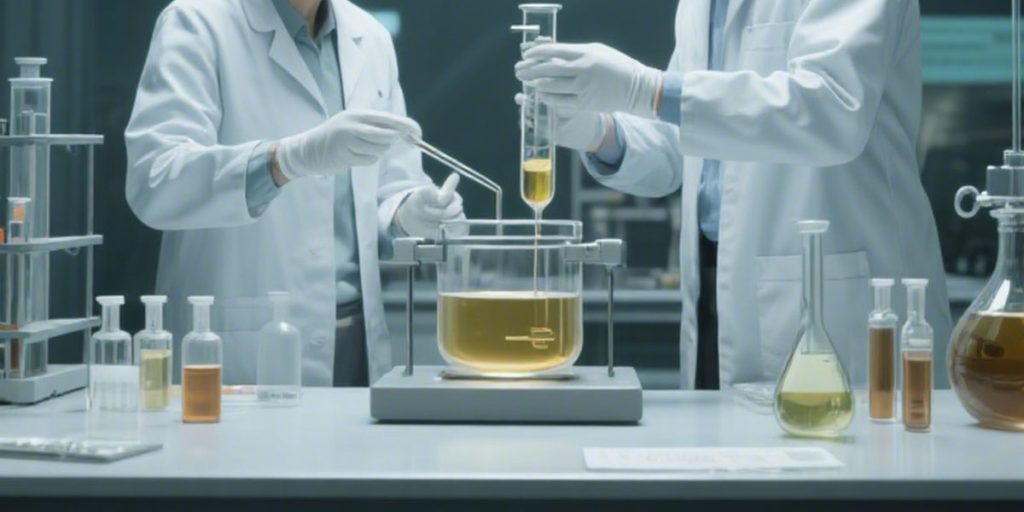
Chemical Raw Materials
The rich olefins, aromatics and other compounds in pyrolysis oil make it a high-quality chemical raw material. Taking olefins as an example, olefins in pyrolysis oil can be further converted into basic chemical monomers such as ethylene and propylene through catalytic cracking, steam cracking and other technologies.
These monomers are the cornerstones of manufacturing various plastic products, synthetic rubber, fiber and other polymer materials. Thus, the chemical cycle from waste plastics to new plastics is realized, and the closed loop of waste plastic recycling is truly opened.
Some companies use waste plastic pyrolysis oil to produce ethylene and propylene, and then re-synthesize polyethylene, polypropylene and other plastics. This realizes the efficient recycling of resources.
Opportunities of Waste Plastic Pyrolysis
Plastic pyrolysis plants convert waste plastics into fuel oil, which can be a cheaper partial substitute for petroleum. The production of pyrolysis oil from plastic waste is ecologically and economically superior to many other options. Because it solves environmental pollution issues and reduces the demand for crude oil by serving as an alternative feedstock in the production of lubricants and other petroleum products.
Under the background of global high attention to environmental protection and increasingly strict plastic pollution control, the waste plastic pyrolysis oil industry has broad market prospects. With the advancement of pyrolysis technology and the optimization of pyrolysis equipment, the waste plastic pyrolysis oil industry has ushered in an opportunity for vigorous development.
ExxonMobil, Shell and other petrochemical giants, relying on their strong technical strength and financial advantages, actively carry out the research and development and production of waste plastic pyrolysis oil projects. They regard pyrolysis oil as an important way to expand new sources of raw materials and achieve sustainable development.
Companies such as Malaysia’s National Petroleum Chemical Group (PCG) and Finland’s Neste have also made significant progress in the production and application of pyrolysis oil. They continue to optimize production processes, improve pyrolysis oil production and quality, and explore the diversified application of pyrolysis oil in biofuels, chemical raw materials and other fields.
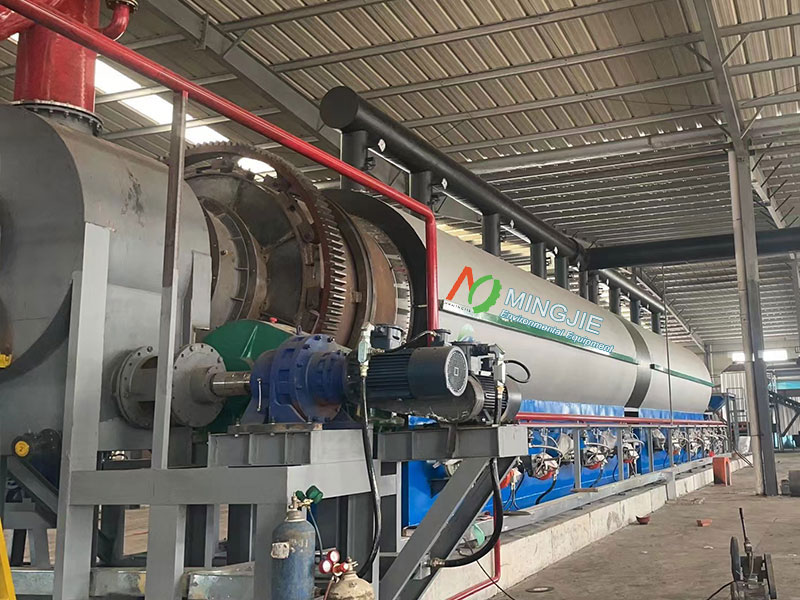
In China, the waste plastic pyrolysis oil industry is also developing rapidly. Henan Mingjie Environmental Protection Equipment Co., Ltd. has launched a series of plastic pyrolysis plants, such as MJ-2 skid-mounted small pyrolysis plant, MJ-6, MJ-10, MJ-12, MJ-15 batch pyrolysis plant and MJL-15 semi-continuous pyrolysis plant, and MLL-20T, MLL-20P, MLL-30T fully continuous pyrolysis plant.
Mingjie waste plastic continuous pyrolysis plant has outstanding advantages such as high pyrolysis oil yield, continuous and stable operation, and strong raw material adaptability. We equip it with a special emission purification system that can meet the emission standards of different countries.
Plastic pyrolysis is an attractive option for treating plastic waste. As long as the pyrolysis process is designed reasonably and the process conditions are properly controlled, plastic pyrolysis usually produces fewer toxic products.
Challenges of Plastic Recycling
The waste plastic pyrolysis oil industry faces high economic cost pressure. Building a pyrolysis plant requires a large amount of money for equipment purchase, plant construction, technology research and development, etc., and the initial investment cost is huge. The collection, transportation and pretreatment costs of waste plastics cannot be ignored.
The market price of waste plastic pyrolysis oil fluctuates greatly. It is affected by many factors such as crude oil prices and market supply and demand. This makes the economic benefits of pyrolysis oil production companies face greater uncertainty.
At present, the policies and regulations for the waste plastic pyrolysis oil industry are not perfect enough, which has affected the standardized development of the industry to a certain extent. Some countries and regions have introduced policies to encourage the recycling of waste plastics. However, there are still missing or imperfect policies and regulations on pyrolysis oil product standards, quality supervision, market access, etc.

